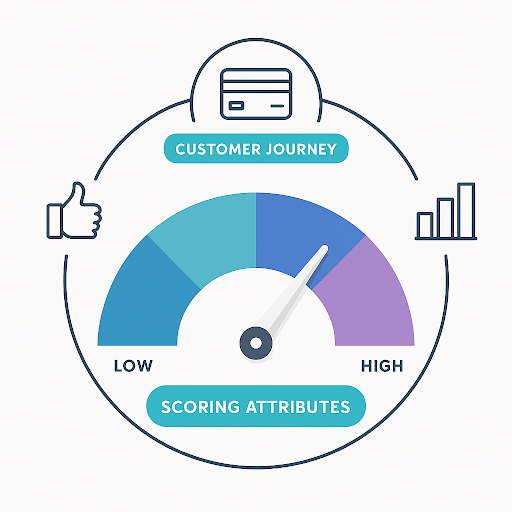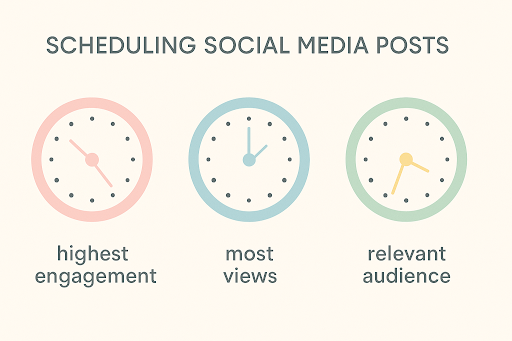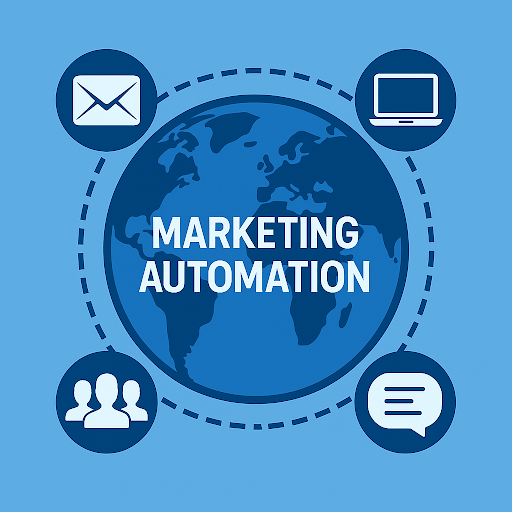Marketing automation today is a necessity for businesses of all sizes. But even as amazing as these tools are, most organizations still have to decide on what to automate and what requires that human touch of distinction.
There are many upsides to automation, but the response is not just “automate everything.” Successful automation implementation is a reflective process that brings efficiency with authenticity, velocity with customization, and scale with real connection.
Done correctly, a solid marketing automation strategy can generate leads, increase conversion rates, and provide marketing departments with loads of free time. This in-depth guide delves into the subtle choices that lead to successful automation planning. It also explains how to implement marketing automation for business success.
Why Do You Need a Strong Marketing Automation Strategy?
Having a solid strategy in place is actually very important for all of your automated efforts. If you don’t do this, as companies tend to just automate pieces and parts, it leads to a disconnected customer experience and suboptimal outcomes.
A good automation planning begins with charting your customer journey and outlining distinct touchpoints for meaningful connections. Your customers now have access to a multichannel universe of touchpoints. Therefore, companies need to have automation software that can seamlessly blend distinct sources of data and combine them into a unified experience.
For instance, as Google AI Overviews change how information is presented in search results, creative marketers have begun to incorporate AI Overviews Tracking Tools into measurement frameworks. The tools allow businesses to understand how their automated content performs in AI-generated search summaries so they can sustain the effectiveness of their automation as search technology evolves.
Areas Where Automation May Help
You shouldn’t automate every business process, or you’ll suffer losses. The following areas present the best opportunities for marketing automation implementation.
Running Lead Nurturing Campaigns

Source: Canva
Lead nurturing is the most compelling use of automation. Well-constructed lead nurturing automation is more than a series of emails. The good thing is that modern marketing automation workflow processes can:
- Monitor prospect activity across a series of touchpoints
- Customize messaging based on engagement level
- Automatically route high-quality leads to sales teams when they show purchase intent.
This sophisticated lead nurturing strategy is well worth it, especially when executing a digital campaign to launch a new product, since you can teach prospects about your new product and walk them through the sales process.
Handling Lead Scoring
Auto lead scoring revolutionizes the way companies prioritize and manage their sales efforts. With automated point attribution to different prospect actions like email opens, website browsing, downloads, and social media engagement, marketing automation software determines the hottest leads with no human involvement.
Compound algorithms for lead scoring bring together explicit data (data the prospect provides directly) and implicit data (behavioral data) to create rich profiles of likely buyers. This automated process allows sales teams to target likely-to-convert prospects while marketing continues to nurture prospects that require more attention.
Optimizing Customer Onboarding
Automated customer onboarding processes allow new customers to realize value within a matter of minutes and transfer less workload to customer success teams. Such processes can guide customers through setup procedures, familiarize them with essential features, and provide learning material that allows them to achieve initial success with your product or service.
Creating Behavior-Triggered Messaging
Behavior-triggered messages are arguably the strongest automation tools in the sense that they are a direct reaction to customer interest and behavior. Automated messages in a scenario can range from abandoned cart reminders for promoting WooCommerce store success to re-engagement campaigns for dormant subscribers to product recommendations from browsing history.
The whole point of behavior-triggered messaging is about making it relevant and timely. When customers show certain interests or do specific things, automated systems can send them messages that match what they’re thinking right then. This way, it gets way more engagement than those general, scheduled campaigns.
Handling Social Media Scheduling

Source: Canva
Social media automated software enables businesses to have a continuous online presence without devoting a lot of time to creating posts manually. Automated scheduling enables content to be delivered to audiences at the most productive times across different platforms, and enables marketing teams to think more strategically and engage with people.
Good social media automation is more than just simple scheduling and involves content curation, hashtag optimization, and basic performance tracking. Good social media automation, however, needs tuning. Just bear in mind that there’s always a need for actual engagement and community building for social media campaigns to succeed.
Simplifying Analytics & Reporting
Automated reporting and analytics tools are important parts of marketing automation strategies because you can manually report performance without losing the capability of keeping important stakeholders continuously informed about marketing performance. These tools can automatically provide reports, detect trends, and even notify teams of dramatic changes in important metrics.
Areas Where Automation May Not Help Much

Source: Freepik
While there are many benefits of marketing automation, certain marketing efforts require human imagination, sympathy, and intuition to be effective. Understanding these limitations ensures effective customer relationships while making use of automation for optimal benefits.
High-Profile Client Communications
Sophisticated communications, contract negotiations, and communication with high-value customers demand the subtle knowledge and relationship skills that are offered by humans alone. They tend to involve multiple parties, intricate decision-making, and sensitive matters that demand emotional intelligence as well as flexibility.
Personalized, Authentic Content
It’s true that automated systems can completely tailor things based on data and what individuals do, but certain content simply requires a human touch in order to resonate. If it’s about delicate issues, providing emotional support, or simply handling complicated personal issues, you certainly require human understanding and emotional intelligence.
This applies to matters such as major life milestones, difficult business issues, or issues that require industry expertise and a sharp understanding.
Emotional Storytelling
Brand storytelling and innovative strategy development depend on human imagination, cultural sensitivity, and strategic thought that today’s automation technologies are not able to deliver. Although AI applications can support content generation and optimization, the original creative vision and strategic narrative creation have to be complemented by human imagination and knowledge.
Higher-level B2B Sales Communication
Sophisticated B2B sales cycles would most likely entail multiple stakeholders, extended consideration times, and intricate solution configurations involving human judgment and relationship management. Such conversations require a set marketing automation workflow and demand skills to read subtle business needs, present reports in a responsive manner for stakeholder feedback, and handle intricate organizational dynamics.
Social Media Growth and Engagement
You can automate social media posts completely, but real interaction takes actual human effort and immediate response that just can’t be replicated by automation. And social commerce has made being properly engaged on social media absolutely critical to business success. Shoppers just adore brands that sound authentic, react naturally to what’s happening, and talk in a way that feels natural and helpful and not all scripted or pushy.
How Do You Decide If Automation Is For Your Business?

Source: Canva
Having a good way to evaluate automation opportunities guarantees that you’re automating the right things without losing that all-important human touch. This decision-making process gives you unambiguous instructions for making these foundational strategic choices.
- The main factor to consider in this instance should be task variability and complexity. Processes that are stable in their behavior, have well-defined rules, and involve little creative decision-making are the best candidates for automation.
- Volume and frequency are other decision-making considerations for automation. High-volume tasks that occur frequently result in the best efficiency gains when automated. They can be welcome email campaigns, routine customer service messages, or recurring report tasks that consume a lot of manual time but occur in predictable patterns.
- Your choices also need to be driven by the customer implications of automation. Think about whether automation will enhance or worsen the customer experience. Anything that aids your response times, consistency, or personalisation is a candidate for automation, but things that customers want to be personal and human need to be taken care of manually.
- Finally, risk evaluation deserves your attention when deciding to automate. High-consequence processes where mistakes can be highly likely to impair customer relationships or business results might be worth human scrutiny even if they could be technically automated. These processes would include major account communications, crisis management, and high-value financial transaction processes.
Best Practices for Successful Marketing Automation
Automation is successfully implemented by using established best practices that ensure maximum effectiveness while ensuring high-quality customer interactions.
- Design well-crafted segmentation plans that allow for effective personalization without crippling complexity. Effective segmentation finds the right balance between detail and usefulness, creating groups that are differentiated sufficiently that different messaging is necessary, but large enough that they will need a separate workflow.
- Have strict testing procedures in place for every automated campaign prior to final deployment. Test multiple scenarios, edge cases, and customer journey paths to make sure automation does what you intend it to in different scenarios. This involves testing integrations between different systems and making sure that data gets processed appropriately along the way in your marketing automation process.
- Keep precise records of all the automation procedures, such as trigger rules, decision logic, and escalation processes. These records enable team members to comprehend system behavior, fix problems with ease, and keep updates or changes perfectly aligned.
Common Mistakes to Avoid with Automation
Over-automation is probably the most destructive mistake. The moment companies attempt to automate too many customer touchpoints, they unconsciously develop unnatural, mechanized experiences devoid of the human element. Customers are incredibly quick at recognizing that they are working with over-automated systems, and that usually leads to unfavorable brand sentiments.
Likewise, ignoring mobile optimization in automated communication causes enormous issues because mobile usage is still the leading form of digital contact. Automated email, landing pages, and other customer communications must be flawless on any platform to deliver customer experiences to the fullest.
Inability of marketing and sales teams to align on automation processes causes friction in the customer experience and lost conversion opportunities. When automation passes on leads to sales teams without context or qualification, it usually ends in poor customer experiences and wasted sales resources.
Conclusion
A good automation strategy in marketing is all about getting the right balance of being genuine, leveraging technology, and imbuing that little bit of humanity. The best strategies start with some objectives, but really, you kind of need to automate incrementally, test, and be open to adjusting things as customers’ needs and technology change.
Just remember that marketing automation strategies are supposed to enhance your marketing skills, not take the place of good ol’ strategic thinking and actual customer service.






0 Comments